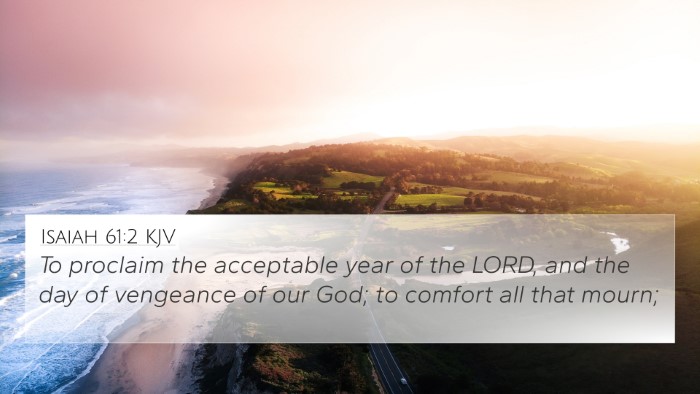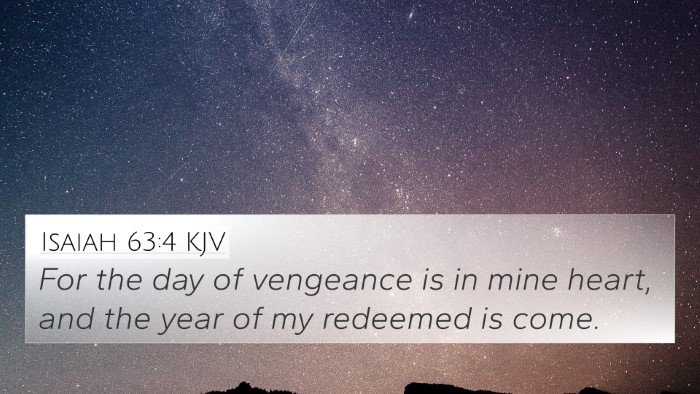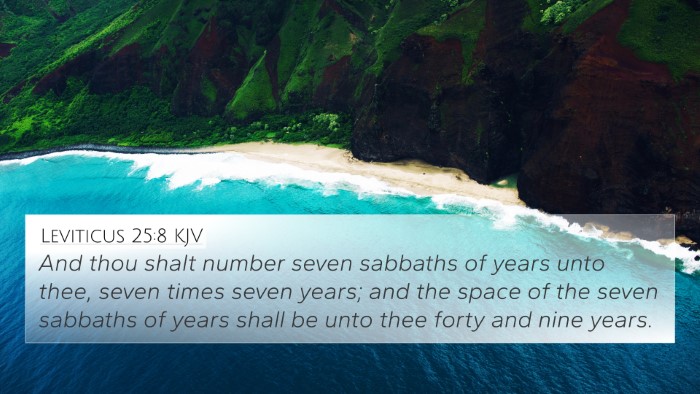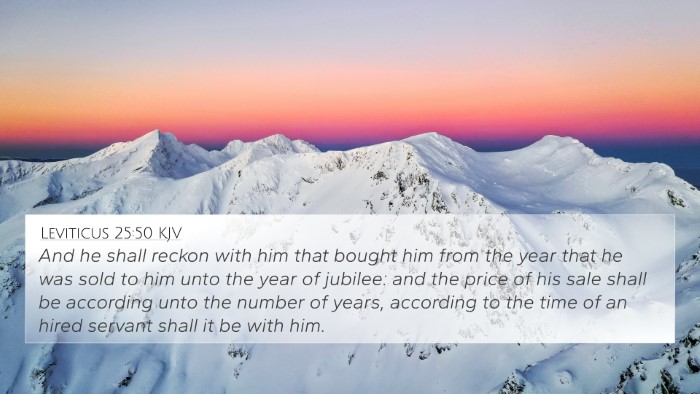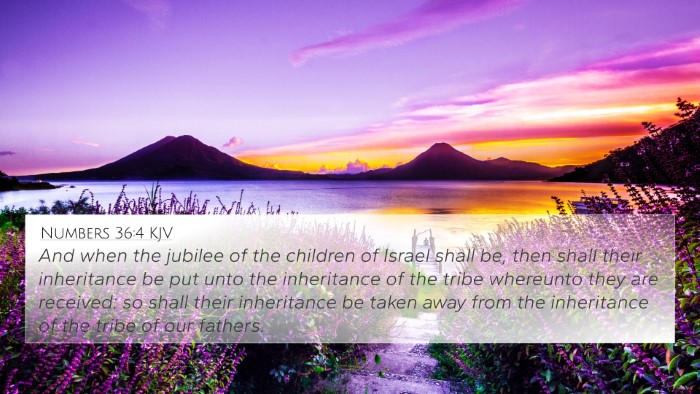Understanding Luke 4:19
In Luke 4:19, Jesus proclaims a vital aspect of His mission on earth, stating:
"To proclaim the year of the Lord’s favor."
This declaration signifies the inauguration of a time when God's grace and mercy will manifest abundantly. Below, we will explore the deeper meanings of this verse, drawing insights from public domain commentaries by Matthew Henry, Albert Barnes, and Adam Clarke.
Contextual Insights
Luke 4:19 is situated within a larger narrative in which Jesus reads from the scroll of Isaiah in the synagogue of Nazareth. This event not only marks the beginning of His public ministry but also emphasizes His role as the Messiah. Jesus cited Isaiah 61:1-2, effectively linking His work with prophetic expectations of Israel.
- Matthew Henry: He emphasizes the significance of Jesus coming to fulfill the prophecies regarding His mission. The 'year of the Lord's favor' references a time of grace for all humanity, hinting at spiritual deliverance and reconciliation.
- Albert Barnes: He mentions that this phrase extends beyond mere temporal blessings; it denotes a profound spiritual liberation from sin and the effects of a fallen world. Barnes connects this to the themes of salvation and inner healing.
- Adam Clarke: Clarke provides insight into the symbolic meaning of the 'year of the Lord’s favor,' interpreting it as a jubilant period marked by God's grace, similar to the Jubilee year in the Old Testament, which brought restitution and liberation.
Thematic Connections with Other Scriptures
This verse serves as a pivotal anchor point for various biblical themes and ideas. Here we can explore cross-references that amplify the significance of Luke 4:19:
- Isaiah 61:1-2: The prophetic source from which Jesus quotes, emphasizing liberation and healing.
- Matthew 5:3-12: The Beatitudes reflect the spirit of blessing and favor that Jesus brings.
- Lamentations 3:22-23: Highlights the theme of God's mercies; His compassion is renewed every morning.
- Mark 1:15: Jesus proclaims the kingdom of God, urging for repentance and belief, resonating with the proclamation of favor.
- 2 Corinthians 6:2: This verse affirms that now is the time of salvation, echoing the urgency of Jesus' message in Luke 4:19.
- Galatians 5:1: It is for freedom that Christ has set us free, which aligns with the deliverance Jesus speaks of.
- Romans 8:21: The creation itself will be liberated, reflecting the broader implications of the 'year of the Lord’s favor.'
Inter-Biblical Dialogue
The cross-referencing of Luke 4:19 with other biblical texts facilitates a deeper understanding of the message of liberation and favor:
- Connections between Bible verses: The several references listed demonstrate how Luke 4:19 ties into larger themes present throughout both the Old and New Testaments.
- Scriptural cross-referencing: Understanding these connections enriches the interpretation of one's spiritual journey and highlights the continuity of God's redemptive plan.
- Comparative study of Pauline epistles: Paul's letters frequently encapsulate themes of grace and favor, which have their roots partly in the message established in Luke 4:19.
- Identifying connections between Old and New Testament: The fulfillment of Old Testament prophecies in Christ displays the unity within scripture, as communicated through Luke 4:19.
Practical Applications
Understanding Luke 4:19 through these lenses equips believers for daily living:
- Embracing Spiritual Favor: Acknowledging God's grace empowers individuals to live free from guilt and shame, embodying the freedom Jesus offers.
- Sharing the Message: Christians are called to communicate this 'year of favor' to others, participating in ministry and acts of compassion.
- Living in Hope: Believing in the realization of God's promises creates a foundation of hope that transcends circumstances.
- Praying for Liberation: Engaging in prayer that aligns with the themes of deliverance and restoration found within this verse fosters spiritual growth.
Final Thoughts
Luke 4:19 represents not just the commencement of Jesus' ministry but also serves as a message of hope to all humanity. Its ties to the Old Testament and its thematic connections throughout the New Testament illuminate the continuous narrative of salvation.



